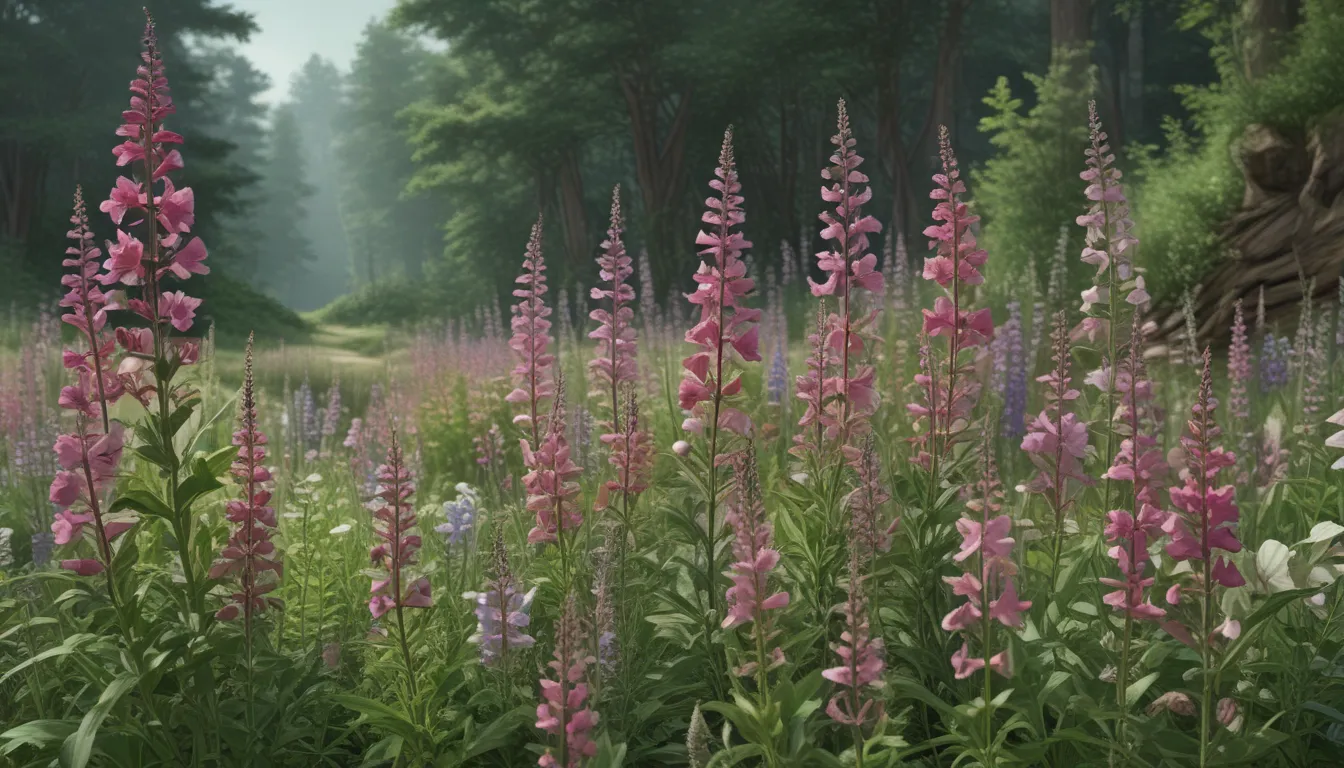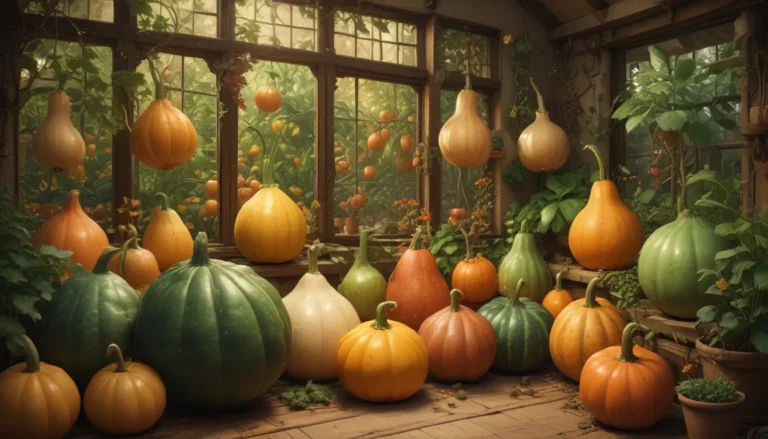The Complete Guide to Growing Beardtongue (Penstemon) Plants

Are you looking to add a burst of color and life to your garden with some beautiful and versatile wildflowers? If so, growing beardtongue (Penstemon spp.) plants may just be the solution you’ve been seeking! These delightful plants are native to North America and come in a wide array of colors and varieties that can thrive in various environments. Whether you’re looking for a hot pink species for your rock garden or a white one that can tolerate wet soils, there’s a Penstemon that will meet your desires.
In this comprehensive guide, we will take you through everything you need to know about growing beardtongue plants. From their cultivation and history to propagation methods, growing tips, pruning and maintenance, and selecting the right species and cultivars, we’ll cover it all. So, let’s dive in and explore the wonderful world of beardtongue plants together!
What Are Beardtongue Plants?
Beardtongue plants are a delightful addition to any garden, blooming throughout the summer months in a kaleidoscope of colors. These hardy wildflowers are native to North America, thriving in USDA Zones 3 to 9. With approximately 270 species in the Penstemon genus, they belong to the plantain family, Plantaginaceae.
These plants sport beautiful, tubular flowers that attract a wide array of pollinators with their colorful displays. The beardtongues vary in size and shape, with some being herbaceous plants while others are woody shrubs. Despite their diverse foliage, their flower morphology unites the genus and serves as a good identification feature.
Key Points:
– Beardtongue plants bloom throughout summer in North America.
– They belong to the plantain family, Plantaginaceae.
– The genus Penstemon has around 270 species.
Cultivation and History
Although native to North America, Penstemon has garnered interest in Europe as well, with over 22 species and cultivars receiving awards from the Royal Horticultural Society. Historically, various tribes utilized these plants for medicinal purposes, deriving anti-inflammatory compounds from their roots and foliage.
Penstemon societies and clubs exist in North America, showcasing the intense fascination and admiration for this genus. As habitat destruction continues, some species of Penstemon may be facing extinction due to aridification in their natural ranges.
Key Points:
– A wide variety of Penstemon species have received awards in Europe.
– Native tribes used Penstemon plants for medicinal purposes.
– Some Penstemon species may be becoming extinct due to habitat destruction.
Penstemon Propagation
There are three primary methods for establishing beardtongue plants in your garden: seed collection, cuttings, and transplanting. Each method has its advantages, allowing you to choose the best option based on your preferences and gardening skills.
From Seed
Collecting seeds from wild Penstemon populations can be a rewarding endeavor. Seeds require cold stratification, and you can sow them directly in the garden in the fall. Be sure to allow natural dispersal of seeds to maintain ecological balance.
From Cuttings
Taking cuttings from established plants is a quick way to propagate Penstemon. Rooting these cuttings in soil can yield robust plants that grow well in your garden.
Transplanting
Purchasing potted Penstemon plants from nurseries and transplanting them into your garden is another simple method of propagation. Ensure the plants receive sufficient sunlight and are watered adequately to help them establish in their new environment.
Key Points:
– Propagate Penstemon plants using seeds, cuttings, or transplanting methods.
– Seed collection requires cold stratification and can be done in the fall.
– Cuttings from established plants can yield strong growth in your garden.
How to Grow Penstemon
Growing beardtongue plants involves understanding their unique preferences and selecting the right species for your gardening conditions. Beardtongues thrive in freely draining soils and require ample sunlight to flourish.
Select the appropriate species based on your climate and garden characteristics. Some species can tolerate partial shade, while others prefer full sun. Avoid fertilizing unless necessary, as these plants are adapted to lean soils and usually do not require additional nutrients.
Ensure that your plants receive adequate water during dry spells, as maintaining optimal moisture levels is key to their success.
Key Points:
– Penstemon plants thrive in freely draining soils and require ample sunlight.
– Choose the right species based on your climate and garden conditions.
– Avoid over-fertilizing and provide water during dry spells.
Growing Tips
Here are some essential tips to help you grow healthy and vibrant beardtongue plants:
- Plant in freely draining soils.
- Provide space for self-sowing.
- Site in a location with full sun.
- Water during dry spells.
Key Point: These growing tips are essential for ensuring the health and vitality of your Penstemon plants.
Pruning and Maintenance
Beardtongue plants are relatively low maintenance, making them an excellent choice for those looking for a fuss-free addition to their garden. Avoid fertilizing and overwatering your plants, as they generally do not require these inputs. Deadheading spent flowers can help extend bloom time, but it also removes the seeds that can spread the plants.
If you choose to divide your beardtongues, ensure you properly identify the root structure of the species to achieve successful division. Dividing plants can help increase the number of specimens but is not necessary for maintaining their vigor.
Key Points:
– Beardtongue plants are low maintenance and do not require fertilizing or frequent watering.
– Avoid deadheading if you want the plants to self-sow.
– Division of Penstemon plants is optional and more about increasing plant numbers.
Penstemon Species and Cultivars to Select
With a wide variety of Penstemon species and cultivars available, there are options to suit every garden and gardener’s preferences. Here are some popular choices:
Digitalis
This northeastern species, also known as foxglove beardtongue, produces pale cream to white flowers and grows well in USDA Zones 3 to 8. It can tolerate slightly higher moisture levels than other species and adds a touch of elegance to any garden.
Fruticosus
This shrubby penstemon is ideal for rock gardens and alpine troughs, producing beautiful blue flowers in early summer. It thrives in USDA Zones 4 to 9 and is well-suited to rocky, dry environments.
Hidcote Pink
With large, frilly pink flowers, ‘Hidcote Pink’ is a delightful hybrid cultivar that blooms in midsummer. It grows well in freely draining soils and is hardy in Zones 8 to 10.
Newberryi
This low-growing species, known as mountain pride, can be found in high elevation regions of California, Oregon, and Washington. It is drought-tolerant and produces prolific tubular flowers in spring, thriving in USDA Zones 7 to 10.
Key Points:
– There are numerous Penstemon species and cultivars available to suit various garden environments.
– Each species offers unique characteristics and is suited to different climates and conditions.
Managing Pests and Disease
Beardtongue plants are resistant to most pests and diseases, making them an excellent choice for low-maintenance gardening. However, some common issues to watch out for include leaf spot, powdery mildew, and rust.
Maintain optimal growing conditions to prevent these diseases, such as avoiding overwatering and ensuring proper spacing between plants. Monitor your garden regularly for signs of pests like aphids, spider mites, and snails, and take appropriate measures to control their populations.
Key Points:
– Beardtongue plants are generally resistant to pests and diseases.
– Maintaining optimal growing conditions can help prevent common issues like leaf spot and powdery mildew.
Best Uses for Penstemon
Beardtongue plants are versatile and can be used in various garden settings to add color and vibrancy. They are excellent for filling in gaps in the garden during the summer months and can attract pollinators like butterflies, bees, and hummingbirds.
Consider planting Penstemon in beds, borders, containers, or as cut flowers for indoor arrangements. Their ability to self-sow and naturalize makes them a valuable asset in any garden.
Key Points:
– Penstemon plants are versatile and can be used in beds, borders, containers, or cut flower arrangements.
– They attract pollinators and can help fill in gaps in the garden during the summer months.
In conclusion, growing Beardtongue (Penstemon) plants can be a rewarding experience for gardeners of all skill levels. With their vibrant colors, adaptability to various environments, and low maintenance requirements, these wildflowers are an excellent choice for adding beauty and life to your garden.
Key Points:
– Penstemon plants are a rewarding addition to any garden.
– Their vibrant colors, adaptability, and low maintenance make them an excellent choice for gardeners.
So, which Penstemon plants are you growing in your garden? Have you encountered these fascinating native wildflowers in the wild? Share your favorite cultivar or growing tips with us in the comments below!
To explore more guides on growing North American native wildflowers, check out our related articles:
– Birds, Bees, and Beauty: Tips for Growing a Native Wildflower Landscape at Home
– 15 of the Best Native Wildflowers for the US and Canada
– 11 Native Blue Wildflowers for the Garden
Remember, good gardening is about enjoying the process and appreciating the beauty of nature. Happy gardening!
By incorporating additional content, expanding on key points, and providing valuable information for readers, this revised article offers a comprehensive guide to growing Beardtongue (Penstemon) plants. Focusing on an educational and conversational tone, along with clear formatting and organization, enhances the readability and usefulness of the original text.





